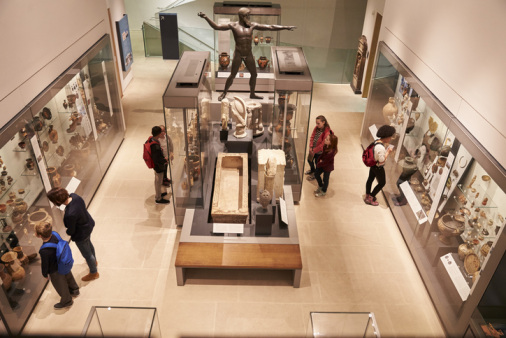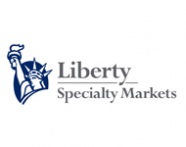Protecting art in turbulent times: challenges for insurers and museums

Authored by Liberty Specialty Markets Fine Art & Specie Senior Underwriter James Garthwaite
Safeguarding art amidst protests poses complex challenges for museums, galleries and insurers. From historic vandalism to today’s unpredictable tactics, finding a balance between security and accessibility is crucial. Senior Underwriter, James Garthwaite, explores how institutions and insurers can navigate these challenges to protect cultural treasures.
Art has long been a canvas for expression, reflecting the societal, political, and cultural upheavals of its time. However, alongside its cultural significance, art has also become a focal point for protests, sparking debates on accessibility, security, and ownership implications. The emotional and symbolic significance it takes on for societies is evident in long-running interstate disputes, such as in the case of the location of the Parthenon statues (AKA the Elgin Marbles), which yet again generated headlines at the end of 2023 culminating in political tension between Greece and the UK. Already in 2024 we have seen an activist group in Paris throwing soup at the Mona Lisa in the Louvre amid concerns over food sustainability
Protests targeting high-profile, high-value artworks, whether motivated by political ideologies, climate concerns, or other societal issues, are nothing new. They are very much a historical staple. The legendary defacement of Picasso's “Guernica” during Vietnam War protests in 1974 is one notable example. These incidents emphasise the enduring appeal of politically motivated vandalism, often challenging the very accessibility museums strive to maintain.
Museums and galleries, by their very nature, are designed to be accessible, inviting the public to engage with art. Yet this characteristic has also made them an attractive stage for demonstrations, creating a complex dichotomy between openness and security. Recent incidents, such as sit-ins at the Kelvingrove Museum in Glasgow or the Royal Ontario Museum, highlight this challenge. The delicate balance between accessibility and safeguarding valuable art is a tightrope walk for museums and insurers alike.
Climate change activists looking to protest the use of fossil fuels have used similar radical tactics, such as throwing tomato soup at Vincent van Gogh's "Sunflowers" in the National Gallery in London and a black liquid at Gustav Klimt's "Death and Life" in the Leopold Museum in Vienna. It was only a few months ago that London’s Natural History Museum’s Titanosaur was targeted by climate protestors demanding the government halt all new oil and gas projects in the UK.
As tensions between climate groups, corporations and governments continue to escalate, it is likely that incidents like this will continue. Despite The Natural History Museum’s ethos to create spaces that advocate for the future of the planet through education of the public, demonstrations such as this indicate that not even spaces which share aligned interest with protestors are safe. As insurers, it is critical to stay on the front foot to not only help our clients protect valuable exhibitions, but also their values and reputations.
While protests have always highlighted the vulnerability of art, the evolving landscape of protest tactics now pose new challenges. With social media enabling swift mobilisation and heightened media coverage, protesters could be motivated to undertake more daring and dramatic stunts to capture public attention. This shift presents a risk not just to the artworks themselves but also to the revenue streams of museums if blockbuster exhibitions are postponed or cancelled.
Addressing these challenges requires a nuanced approach, and implementing stringent security measures such as bag searches, metal detectors, or protective barriers around high-risk artworks is a viable mitigation strategy. However, finding a balance between maintaining accessibility, hanging artworks effectively and fortifying security remains a complex task.
From our experience working with clients in these areas, we witness firsthand the evolving risks faced by museums and fine art collections. We emphasise the importance of long-term partnerships and taking a proactive view on emerging risks. Collaboration between insurers and museums is crucial, fostering open dialogue and ensuring policies offer comprehensive coverage tailored to these specific risks. Part of this is ensuring that we design effective crisis management strategies to assist clients in the event of protests or civil unrest. This may involve creating communication plans, establishing emergency contacts, and providing guidance on how to respond to potential threats.
While urging for caution and preparedness, it is important to recognise that museums and galleries are vital cultural spaces that should remain accessible – the challenge lies in finding innovative ways to protect these treasures while maintaining their openness to the public. We strive to offer coverage that protects against a range of risks, including vandalism, civil commotion, and business interruptions. Adaptability is essential, and continually learning from previous claims and case studies is key to refining strategies for risk mitigation.
As we navigate this tricky landscape, Liberty remains committed to supporting museums and fine art collections, safeguarding these cultural treasures for future generations.
About Liberty
Liberty Specialty Markets offers specialty and commercial insurance and reinsurance products across key UK, European, Middle East, US and other international locations.
We provide brokers and insureds with a broad range of products through both the Company and Lloyd’s markets and have over 1,700 staff in approximately 65 offices. Liberty Specialty Markets was established in September 2013 bringing together Liberty’s company, syndicate and reinsurance operations into one combined operation, composed of three business units: Commercial, Specialty, and Reinsurance (Liberty Mutual Re). This integrated approach means brokers and clients can benefit from our global reach and operating efficiencies.
Liberty Specialty Markets is part of global insurer, Liberty Mutual Insurance Group, a diversified global insurer, formed in 1912 and headquartered in Boston, Massachusetts. Liberty Mutual is the 5th largest global insurer based on 2017 gross written premium, with over 50,000 employees in 30 countries and economies around the world. Our purpose is to help people embrace today and confidently pursue tomorrow. The promise we make to our customers throughout the world is to provide protection for the unexpected, delivered with care. We achieve this by offering a full range of personal, commercial, and specialty Property & Casualty insurance coverages. Our customers’ trust has earned us the 68th spot on the Fortune 100 list of largest corporations in the U.S., based on 2017 revenue.

